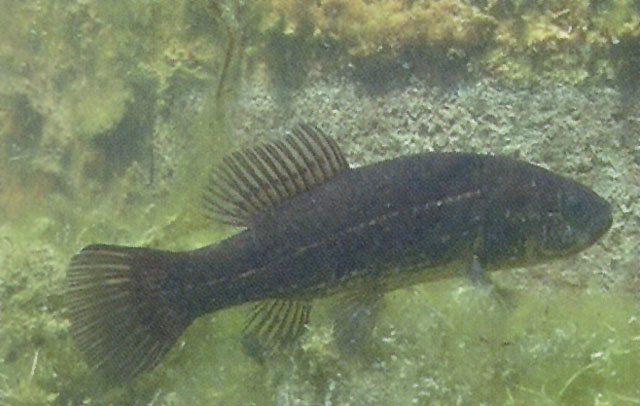| Umbridae (Mudminnows) |
| 17 cm TL (male/unsexed); max. reported age: 5 years |
|
benthopelagic; freshwater; pH range: 6 - 6.5; dH range: 5; depth range - 0 m, non-migratory |
| Europe: Danube drainage from Vienna to delta; lower reaches of Dniestr drainage. |
|
Differs from Umbra pygmaea by the lack of dark blotch at caudal base, its body and head irregularly strewn with small dark sport, and having 33-35 scales in midlateral series (Ref. 59043). |
| Adults inhabit small irrigation canals and slowly flowing and stagnant waters with dense vegetation (Ref. 26183), usually in small ditches, oxbows, backwaters and shallow lakes (Ref. 59043). Territorial in shallow pools and swamps. They feed on larger crustacean plankton and invertebrate larvae (Ref. 26183). This species is under threat due to habitat destruction, irrigation works and disappearance of shallow ditches as suitable habitats, restrictions of river inundation, pressure from introduced fish species and chemical pollution (Ref. 26183). |
|
Vulnerable (VU); Date assessed: 05 March 2010 (A2c) Ref. (130435)
|
| harmless |
|
Present in a few localities. Invaded small water reservoirs, slowly flowing sections of watercourses, including canals and ditches. Prefers muddy bottom. Tolerates oxygen deficit. Scale of impact is weak however it has displaced several species of limnophilous fishes. Wild population numbers are difficult to estimate because only a few individuals were recorded (Ref. 55773). |
Source and more info: www.fishbase.org. For personal, classroom, and other internal use only. Not for publication.

